The curtains around the house can and will eventually begin to grow mold on them. Mold build-up around the home can have real health concerns at worst, and at best, make the house look dirty. It's best to address any mold issues as soon as possible because, as time passes, the growth will only worsen. We've looked into the best ways to remove mold and explain why curtains get moldy in the first place.
Cleaning mold out of curtains is a simple process. Sometimes if the mold is bad enough, a professional cleaning service is required. But don't worry, most of the time, you can remove mold yourself. Regularly kill mold and freshen curtains by hanging curtains out in direct sunlight for a few hours. Thoroughly clean by following these steps:
- Vacuum curtains, or use a stiff bristle brush to remove loose mold.
- Apply a mold removing cleanser.
- Scrub the curtains with a stiff brush.
- Machine wash or hand rinse the curtains (please refer to the manufacturer's care instructions).
- Hang curtains to dry.
While removing mold from curtains is not usually a complex task, other things are worth noting regarding mold. In the rest of the post, we will explain what causes mold on curtains, the health risks associated with mold, and explore different types of cleaners and their benefits. For people wanting to avoid using harsh chemicals for cleaning and prefer a natural touch, we looked into that. If you have any concerns or like more information, we encourage you to keep reading.
![curtain bathroom and Water faucet - How To Remove Mold From Curtains [5 Steps]](https://homedecorbliss.com/wp-content/uploads/2020/10/curtain-bathroom-and-Water-faucet-How-To-Remove-Mold-From-Curtains-5-Steps.png)
How To Rid Curtains Of Mold
Gather Cleaning Materials
First, to get ready to remove mold from your curtains, you will need to gather up a few things. A dust mask is a smart item to wear any time you're dealing with mold. The mask will keep mold spores out of your respiratory system and help keep you from getting sick. Either get a vacuum with an attachment or a stiff bristle brush, used to remove most of the mold on the curtains before any deep cleaning.
We sometimes add affiliate links and content that was curated and created by our team with the help of advanced ai tools to help showcase the best design styles.
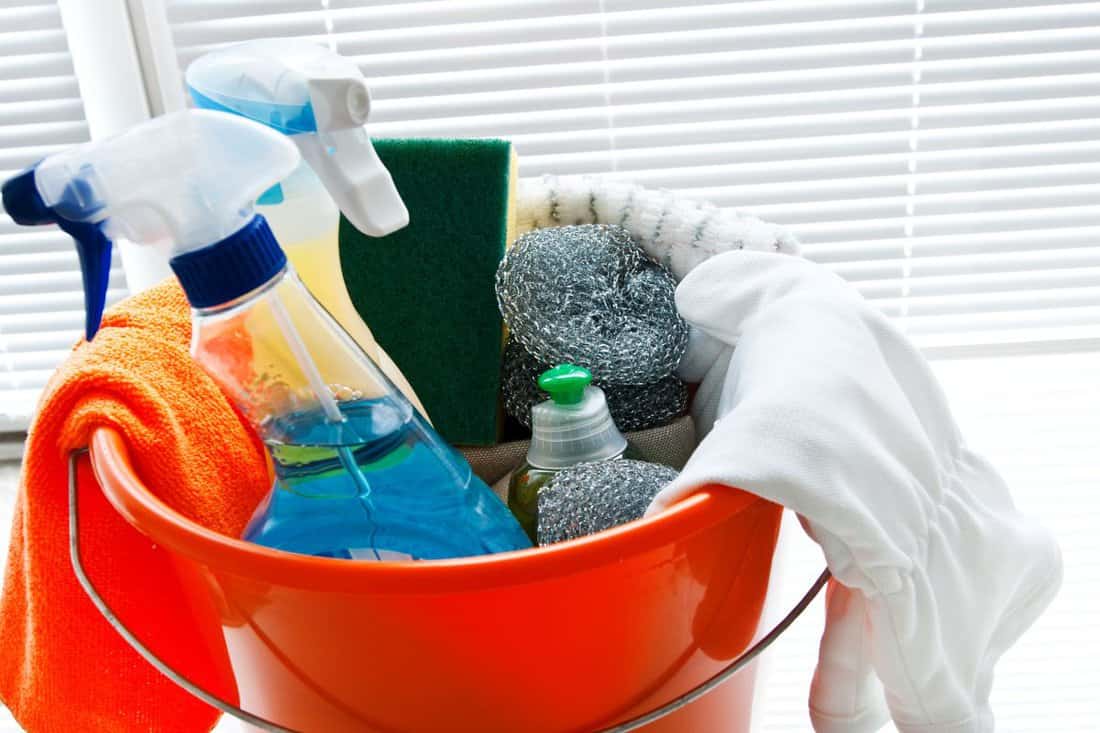
Grab the cleaning solution of choice and get ready to get to work. Mold stain removers include:
- Soap
- Sunlight
- Rubbing Alcohol
- White Vinegar
- Bleach
- Borax
- Hot Water
Ensure if bleach is the cleaning solution you choose, never to mix bleach with any ammonia. This combination will create a toxic gas and can result in serious health issues or death! Check any cleaning solutions for ammonia in advance. We highly recommend not mixing cleaning materials unless you are sure of the ingredients and know the recommended proportions of each solution.
Apply Cleanser & Scrub
Please use any of these quick tips to prepare a cleanser for moldy curtains, and wash thoroughly. Make an excellent all-purpose cleaner with three tablespoons of borax, one cup of white vinegar, and three cups of warm water. Use a cloth or rag dipped in the solution to apply to curtains. Dish detergent works better on shower curtains than fabric curtains, as you'll need to rinse the soap out thoroughly. Dish detergent isn't a great mold killer. Rubbing alcohol needs to be diluted before application to avoid any fabric damage.
Click here to see this on Amazon.
When you start to clean the curtains, keep them be dry before applying the cleaning solution. Either use a spray bottle or a washcloth to get the cleaners onto the affected areas of the curtain. To be safe, give your cleaners a few minutes to soak into the fabric to make sure you're getting to the root of the mold. Use either a vacuum with a brush attachment or a stiff brush like a toothbrush to scrub the mold stains. Please don't use a wire brush or scrub curtains too hard, to avoid damaging the curtains.
Click here to see this on Amazon.
After removing the mold, stains can remain deep in the fabric. Check that your curtains can be machine washed before moving on to the next step. Residual stains may require hand washing based on the manufacturer's care instructions.
Machine Wash Or Hand Rinse Curtains
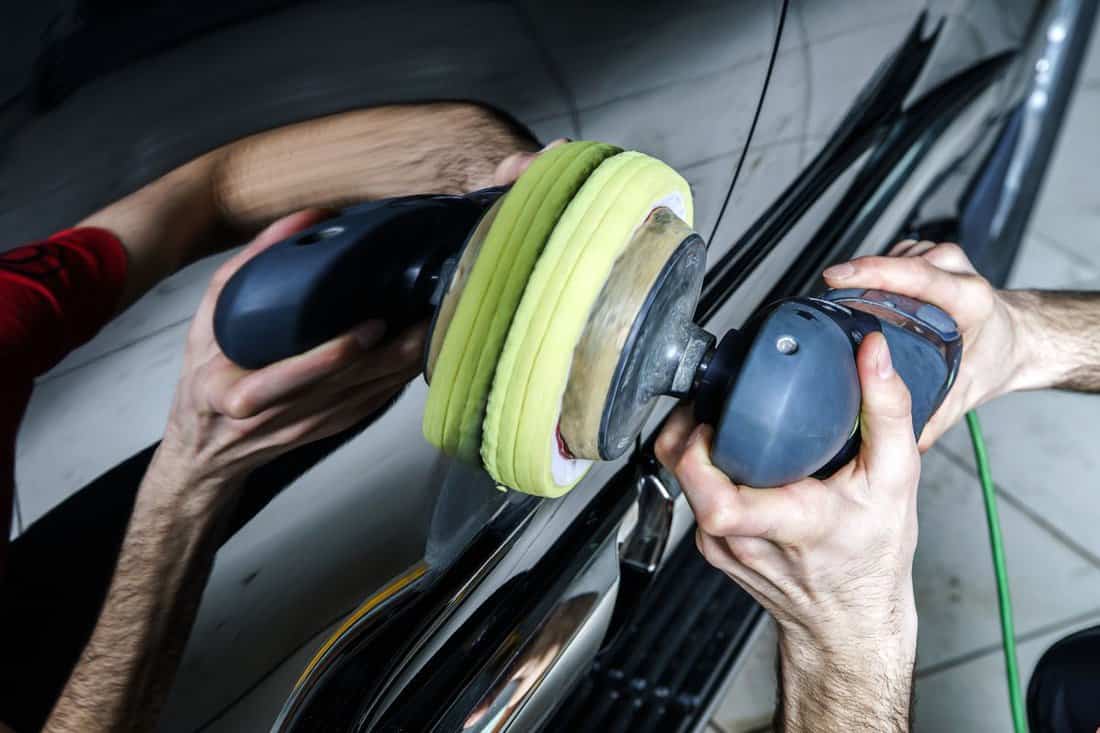
Hot water is a great way to kill leftover mold spores in fabrics. When washing curtains in a washing machine to remove mold stains, make sure to use the hottest water setting on the washer. Check to make sure the curtains can be machine washed without being damaged. If they can't, hand wash them with the hottest water your hands and the fabric can tolerate. At this point, if there are still visible stains, repeat the cleaning process from the beginning.
Hang Dry
After deep cleaning, make sure to air dry curtains outside. Curtains typically cannot go in the dryer, so do not machine dry to risk damaging the curtains. If possible, hang the curtains in bright sunlight. Mold likes to grow in the dark, and sunlight is an effective way to kill off any mold that survived the cleaning. Otherwise, please make sure the curtains are dry before hanging them back up, or the mold-growing-process will start over.
Why Do My Curtains Get Moldy?
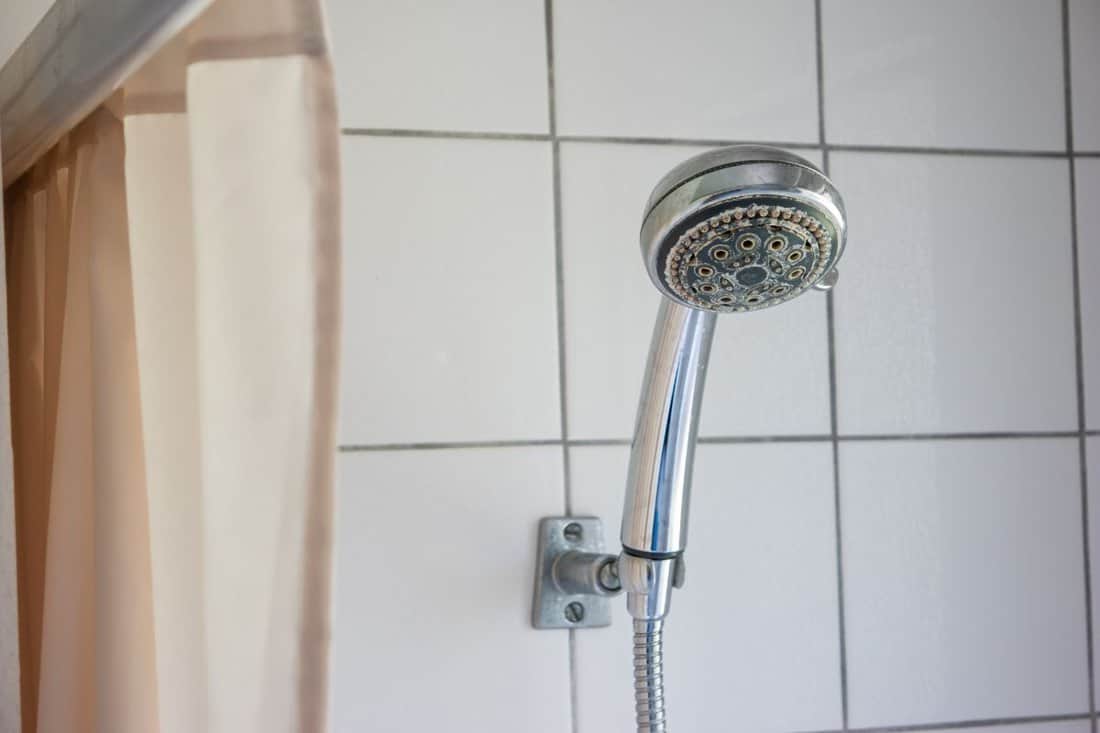
Windows, just like any other kind of glass, form condensation on them from temperature changes and humidity. Because of their placement, curtains will inevitably come into contact with the window glass and any moisture on it. The curtain fabric provides a base on which mold can grow. Mold spores floating in the air land on the curtains, and once the conditions are right, begin to grow. The fabric is a very textural material with an expansive surface area, giving the mold many places to take root.
Interior shower curtains are made differently, usually out of plastic, so they don't have the same issues as window curtains. Since we don't check household curtains for moisture regularly, the fabric tends to stay wet or damp for extended periods, allowing mold to grow.
Curtains tend to get dirty in a few different ways. For tips on how to keep your curtains dust-free, check out our post on that subject Do Curtains Attract Dust [And How To Keep Them Dust Free].
Is Mold On Curtains Dangerous?
Mold on curtains can be dangerous and cause some severe health risks. Any time you deal with mold, wearing a dust mask is a good idea to protect your lungs. A person who is sensitive or allergic to molds will be more affected than a person who does not have those allergies. Regardless of sensitivity, mold build-up can cause issues, including:
- Sore or itchy throat
- Red eyes
- Fever
- Shortness of breath
- Asthma development in children
Long term exposure can increase the risk of these symptoms as well as increase their severity. Children are at a significantly higher risk for these symptoms than adults. Prolonged exposure to mold during childhood has been linked to an increased rate of developing asthma later in life. This is especially true if the child could be genetically predisposed to developing asthma. In the less severe cases, mold can simply make you feel sick like you have a cold. Regular cleaning and checks for mold will reduce the health risks associated with molds.
How Do You Get Rid Of Mold On Curtains Naturally?
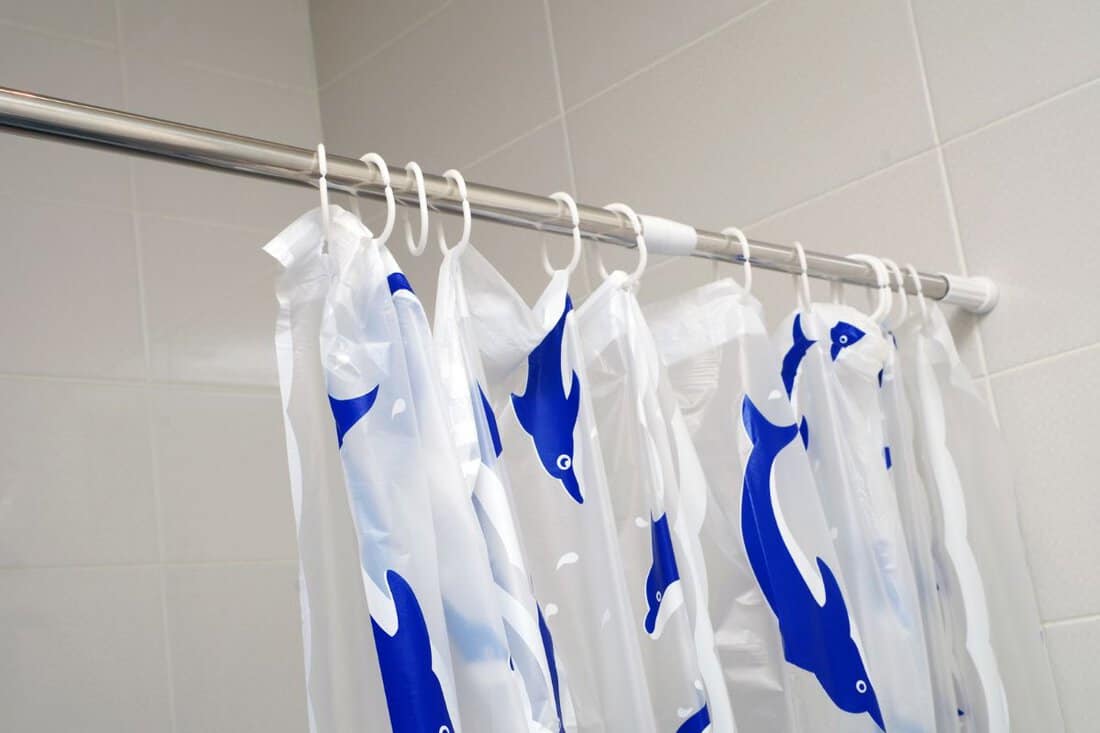
If you prefer to avoid harsh chemicals, there are natural cleaning options to remove mold from household curtains. One of the most accessible natural ways to remove mold is to use baking soda. Mix two teaspoons of baking soda into two cups of water, and wash the curtains with it while scrubbing them with a stiff brush.
Lemon juice with some salt is a reasonably effective disinfectant before and after cleaning. While more expensive, tea tree oil is another option for killing mold, but it does have a strong scent. Like the baking soda, mix two teaspoons of oil with two cups of water, but instead of scrubbing, spray it on the curtains. Do not rinse it off; just let it sit.
To avoid mold odor lingering, use citrus seed extract. Use it the same way as the tea tree oil and remember not to rinse it out. Hot water is one of the best ways to kill off mold spores after the majority is removed. Make sure to wash the curtains in the washing machine (if machine-washable) on it's hotter settings to kill any leftover mold spores.
Is Vinegar Or Bleach Better For Killing Mold?
Both bleach and vinegar do kill mold and remove the stains leftover. Each of the cleaning solutions also has a very distinct and pungent smell. Vinegar is usually diluted in water and then applied to fabrics with a spray bottle. Bleach, on the other hand, is typically added to washing machine cycles.
The most significant difference between these cleaning agents is that bleach will only kill mold on the surface of objects. Using bleach removes surface mold, but it is a less appealing cleaning option because it doesn't kill the spore at the root, which leads to the reappearance of the mold. Vinegar, on the other hand, penetrates porous surfaces like fabrics and kills mold spores inside the fibers, making vinegar a better choice to kill mold on curtains. The most effective time to include bleach in your cleaning is during the machine washing phase.
How Do You Remove Mold From Sheets?
Somewhat in contradiction to the last section, bleach is generally better used to remove mold stains from sheets. Since sheets are commonly lighter colors, completely removing stains can be difficult without using bleach. All of the cleaning steps gone over previously are still valid and the most effective way to kill mold, but for lighter colors, repeated cleaning cycles and bleach are necessary to eliminate visible mold stains. For darker colors, follow the same cleaning steps as for curtains and finish in the washing machine. Sheets stored in closets are more susceptible to mold because of the dark environment, so check folded up sheets regularly.
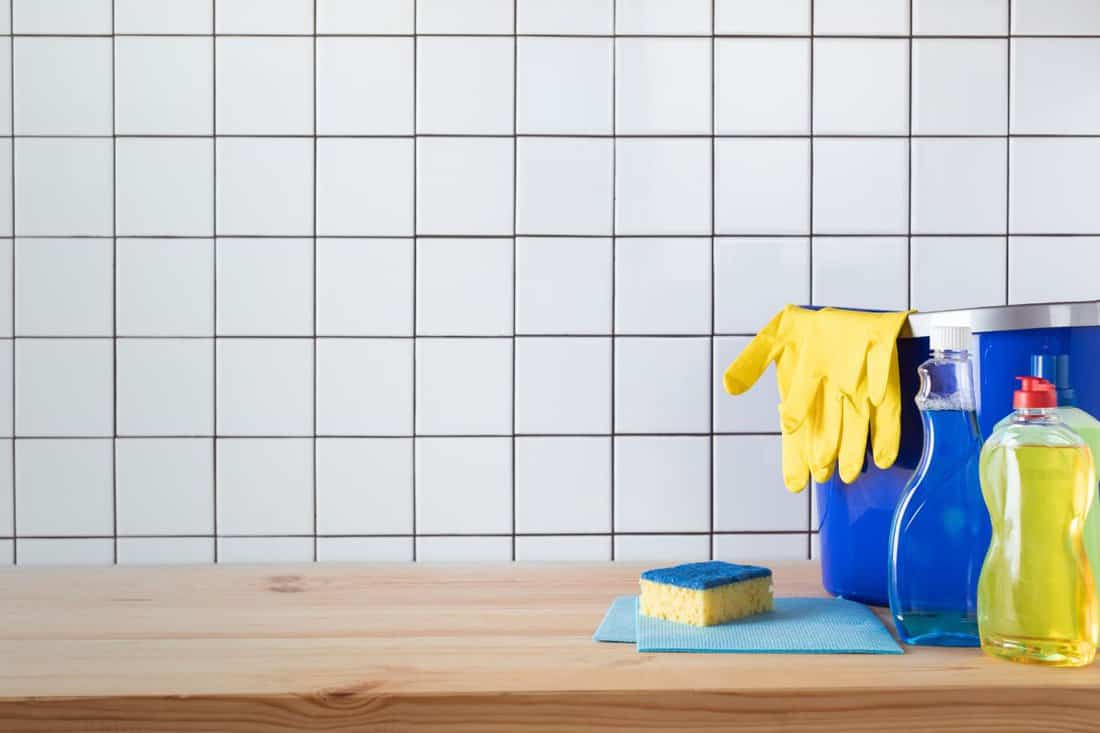
Generally, getting mold out of fabrics of all kinds can be achieved in the same ways. For more ideas and a better breakdown of different fabric types and effectively cleaning them, check out our post on How To Clean An Ottoman Or Pouf [Cleaning Method By Fabric Type].
To Conclude
After reading this article, you should have a good idea of removing mold from curtains, what causes mold, and the health risks associated with mold around the house. Following the cleaning steps from the beginning of this article is best to remove mold. And if you want a natural way to keep your curtains clean, now you have some examples of safe and effective cleaners.
![A home interior showcase with the incorporation of blue curtains against cream colored walls and added with the brown texture of wood laminated flooring, How to Remove Mold From Curtains [5 Steps]](https://homedecorbliss.com/wp-content/uploads/2020/10/How-to-Remove-Mold-From-Curtains-5-Steps-683x1024.jpg)



Will the borax solution kill mold on walls?